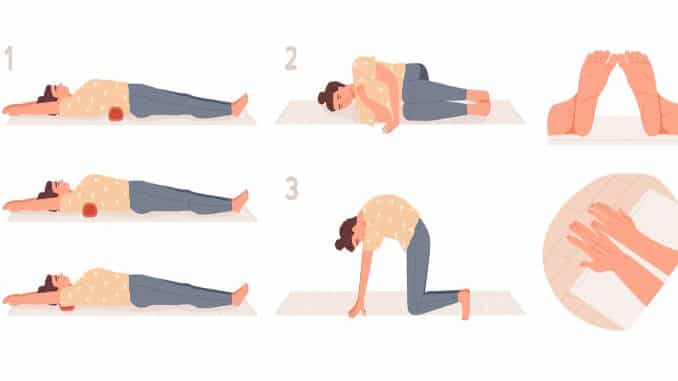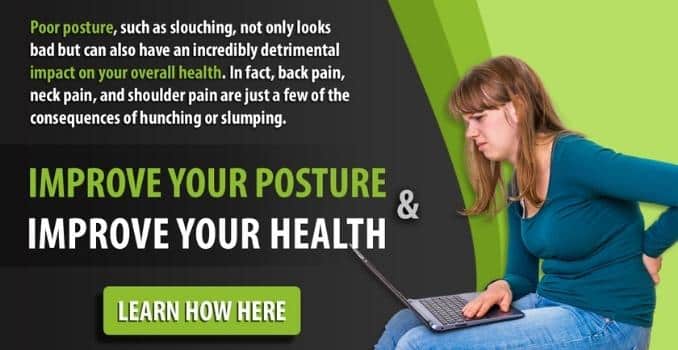Corrective exercise is a type of exercise designed to fix poor movement patterns and posture problems that often lead to pain or injury. It helps improve how your muscles work together, reduces muscle tension, and increases flexibility.
A trained specialist can create a custom plan to target imbalances, like weak glutes or tight hips, and help correct issues such as shoulder pain, forward head posture, or inward-turning knees. Moreover, the goal is to move better, feel better, and lower the risk of injury.
What Are Corrective Exercises?
These are targeted movements that:
- Strengthen weak muscles [1] (like core or glutes)
- Stretch tight muscles (like hip flexors or back)
- Improve posture and body alignment
- Moreover, corrective exercises improved the lower back curve in most people.
Why This Matters
- If you have chronic low back pain or sit a lot, simple corrective moves may help fix your posture and relieve pain naturally.
- You don’t also need fancy equipment—just the right plan and consistency.
- These exercises can be a safe, drug-free way to support spine health.
Understanding Muscle Imbalances
- Muscle imbalances occur when one muscle is overactive and another is underactive, leading to poor posture and movement patterns.
- Then, identifying and addressing muscle imbalances is crucial for improving posture and reducing injury risk.
- A corrective exercise program can help correct imbalances by strengthening underactive muscles and stretching overactive muscles.
- Muscle activation techniques can be used to engage the correct muscles and improve movement patterns.
- Moreover, understanding muscle imbalances is key to designing an effective corrective posture exercises program.
Exercise and the Prevention of Injury
- Exercise can be used to prevent injury by improving muscle balance and reducing muscle imbalances.
- Additionally, corrective posture exercises can help address underlying issues such as poor posture and movement patterns.
- Exercises such as strengthening and stretching exercises can help improve range of motion and reduce muscle tension.
- It’s essential also to address the underlying causes of injury to achieve long-term results.
- Moreover, a fitness professional can help design a personalized program to prevent injury and improve overall movement efficiency.
Top Corrective Exercises To Do at Home
1. Glute Bridges
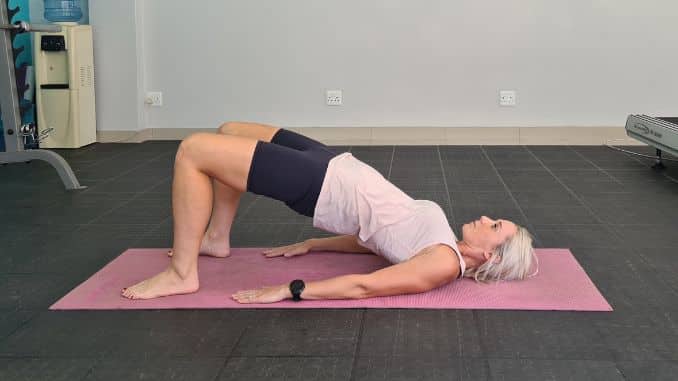
- Lie on your back on the floor with your knees bent and feet flat on the floor.
- Then, raise both hands towards the ceiling.
- Contract your core and press through your heels to lift your hips towards the ceiling, forming a straight line from your knees to your shoulders.
- Moreover, hold the position briefly, then slowly lower your hips back to the starting position.
Fixes: Weak glutes, low back pain, poor hip extension
2. Wall Angels

Fixes: Rounded shoulders, poor posture
- Stand with your back flat against a wall, feet a few inches away, and knees slightly bent.
- Then, keep your head, upper back, and arms in contact with the wall.
- Raise your arms to shoulder height, elbows bent at 90 degrees.
- Slowly slide your arms up the wall, then lower them back down, keeping contact throughout.
- Moreover, repeat this movement in 10 repetitions for 2–3 sets.
3. Bird Dog

Fixes: Core instability, poor balance
- Begin in a four-point position on the floor, with your hands aligned under your shoulders and your knees under your hips.
- Then, engage your core and maintain a neutral spine.
- Extend one arm straight forward while simultaneously extending the opposite leg straight back, keeping both parallel to the floor.
- Hold briefly, focusing on balance and stability, then slowly return to the starting position.
- Repeat the movement on the opposite side.
- Moreover, perform 10 repetitions on each side for 2–3 sets.
To increase the challenge, hold the extended position for 3–5 seconds before returning, or add a small weight to the ankle or hand.
4. Cat-Cow Stretch
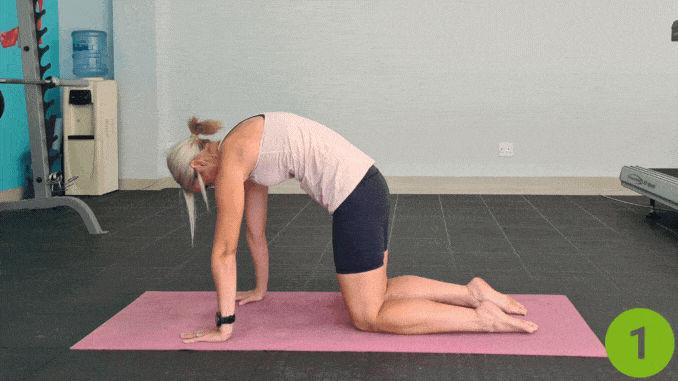
Fixes: Stiff spine, poor posture
- Begin in a 4-point position with your hands beneath your shoulders and your knees under your hips.
- Then, inhale and contract your abdominal area.
- Exhale and slowly round out your mid-back as you drop your head downward.
- Then alternate by inhaling as you slowly lift your head and arch your mid-back.
- Repeat the movement, alternating directions.
- Moreover, complete 3 sets in 5 repetitions.
5. Kneeling Hip Flexor Stretch
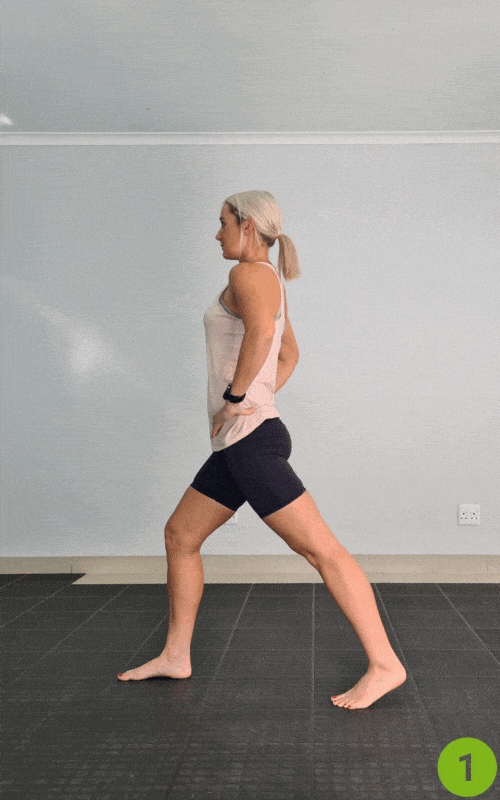
Fixes: Tight hips from sitting too much
- Begin in an upright kneeling position on one knee, with your other foot planted in front of you, forming a 90-degree angle with both knees.
- Then, maintain good alignment with your head, shoulders, and hips.
- Place your hands on your hips. Engage your core and gently push your hips forward, keeping your upper body tall.
- You should feel a stretch in the front of the hip on the kneeling leg.
- Hold this position for 20–30 seconds while taking deep belly breaths, in through your nose and out through your mouth.
- Moreover, return to the starting position and repeat on the opposite side. Perform 2–3 sets per side.
To deepen the stretch, raise your arm (same side as the kneeling leg) overhead and slightly lean to the opposite side.
6. Seated Thoracic Spine Rotations
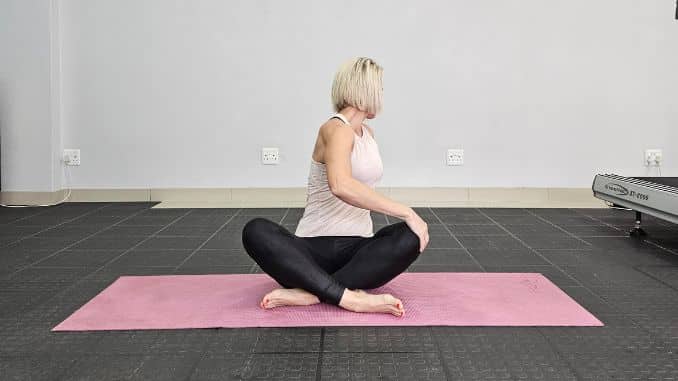
Fixes: Limited upper back mobility
- Begin in a seated position on the floor with your legs crossed, maintaining good alignment with your head, shoulders, and hips.
- Then, place one hand on the opposite knee and the other hand behind you for support.
- Engage your core and gently rotate your upper body toward the side of your back hand, keeping your spine tall and shoulders relaxed.
- Hold this position for a few deep belly breaths, in through your nose and out through your mouth.
- Moreover, return to the starting position and repeat the movement on the opposite side. Perform 2–3 repetitions per side.
To increase the stretch, gently press your hand into your knee to guide a deeper rotation.
7. Back Foam Roller
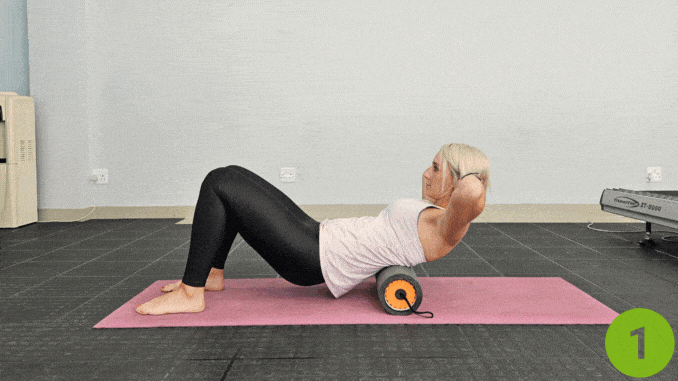
Fixes: Muscle tightness, poor recovery
- Begin by sitting on the floor with a foam roller positioned horizontally behind you. Lie back so the roller is placed under your upper back, with your knees bent and feet flat on the floor.
- Then, place your hands behind your head to support your neck and keep your elbows wide.
- Engage your core and gently lift your hips off the floor into a bridge position, keeping your weight evenly distributed.
- Slowly roll your upper back over the foam roller, moving from just below your shoulder blades to the middle of your back.
- Pause briefly on tight spots and breathe deeply.
- Moreover, roll for 30–60 seconds, then relax and return to the starting position.
To intensify the stretch, extend your arms overhead or gently arch your upper back over the roller for a deeper thoracic release.
8. Doorway Chest Stretch
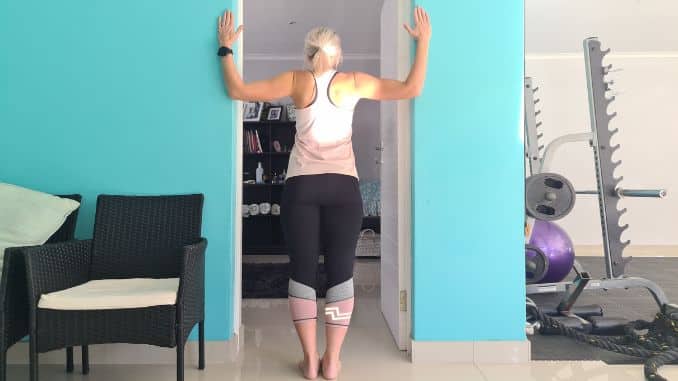
- Begin in an upright standing position in a doorway, maintaining good alignment with your head, shoulders, and hips.
- Then, position your arm at a 90-degree angle against the door frame.
- Lean forward gently to stretch your shoulder and chest.
- Hold this position for 20-30 seconds, taking deep breaths in through your nose and out through your mouth.
- Moreover, return to the starting position and repeat the movement on the opposite arm.
9. Wall Squats
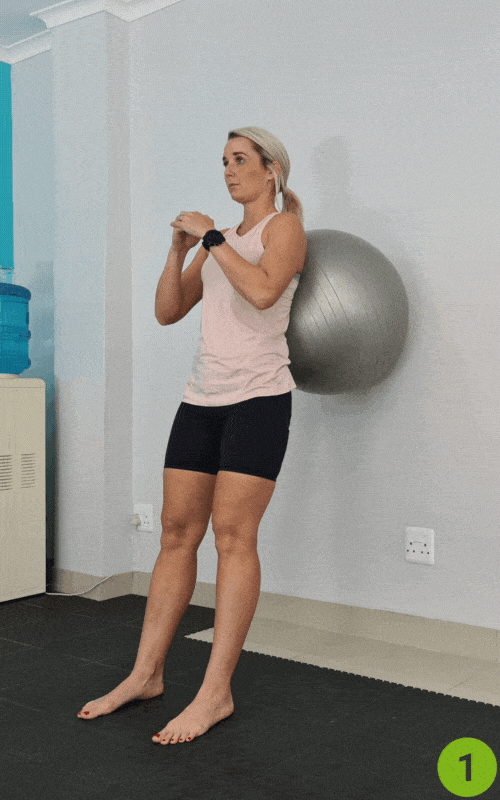
- Begin in an upright standing position with your back against a wall and a stability ball placed between your lower back and the wall.
- Then, maintain good alignment with your head, shoulders, hips, and feet shoulder-width apart.
- Cross your arms in front of your chest.
- Slowly bend your knees and lower your hips into a squat position, aiming for a 90-degree bend in your knees.
- Keep your weight in your heels and your back straight against the ball.
- Hold the position briefly, then press through your heels to return to the starting position.
- Moreover, repeat this movement in 10 repetitions for 2–3 sets.
To intensify the exercise, hold the squat position longer or add light hand weights.
10. Achilles Tendon Stretch
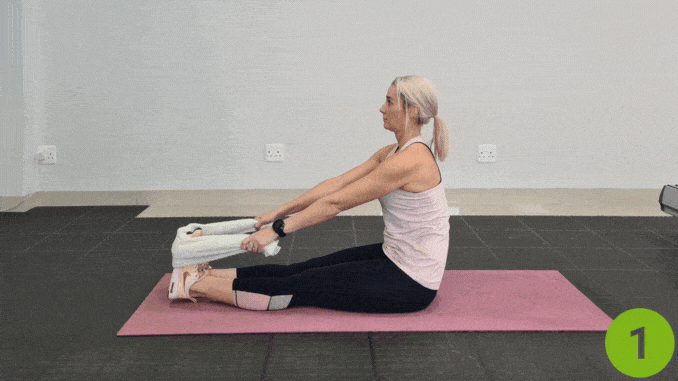
- Begin in a seated position on the floor with your legs extended straight in front of you.
- Then, maintain good alignment with your head, shoulders, and spine upright.
- Loop a towel or resistance band around the balls of your feet, holding both ends with your hands.
- Gently pull the towel toward you while keeping your knees straight, feeling the stretch along the calves and Achilles tendon.
- Hold this position for 20–30 seconds, taking deep belly breaths in through your nose and out through your mouth.
- Moreover, relax and return to the starting position. Repeat the stretch 2–3 times per leg.
To increase the stretch, lean forward slightly from your hips while keeping your back straight.
Corrective exercises can help fix flat feet [3], especially in the early stages.
Benefits of Corrective Exercise
- Fixes bad posture that causes pain and discomfort daily.
- Helps muscles work better so you move more easily.
- Additionally, reduces risk of injury during workouts or daily tasks.
- Less pain in joints like knees, back, or shoulders.
- Additionally, improves balance, making walking and standing feel more stable.
- Helps you breathe better with a more open chest.
- Speeds up recovery after injuries by restoring proper movement.
- Makes workouts safer and more effective for your body.
- Builds a strong foundation before harder exercises or sports.
- Moreover, boosts confidence by making everyday movements feel easier.
Conclusion
According to Dr. SJ, one of the most important parts of a corrective exercise plan is consistency and personalization. He recommends a routine made up of 25% stretching and 75% strengthening exercises, tailored to your specific needs. This balance helps improve posture, heal chronic imbalances, and support long-term recovery—especially when combined with chiropractic care and regular follow-ups.
Corrective posture exercise-based therapy has been shown to reduce spinal curvature and improve overall quality of life in adolescents with idiopathic scoliosis [2]. It is effective when used on its own, and can also provide added benefits when combined with other treatments. Moreover, this approach is particularly beneficial for managing mild to moderate cases, offering a non-invasive way to support spinal health and functional well-being.
Ready to transform your posture and movement efficiency? Start incorporating these top corrective exercises into your daily routine today! For more tips on improving your posture and overall well-being, check out our 5 Daily Habits That Are Damaging Your Posture.
FAQ’s
What is a corrective exercise?
A corrective exercise is a targeted movement or exercise technique designed to fix movement dysfunction, improve posture, and restore proper muscle balance. Guided by a corrective exercise specialist, these programs aim to relieve chronic pain, improve joint mobility, and reduce the risk of injury. Moreover, they are especially effective for addressing muscular imbalances, poor posture, and alignment issues that often lead to long-term pain relief and better physical performance.
What are the best exercises for corrective action?
Some of the most effective corrective posture exercises include:
- Glute bridges and clamshells (to activate hip stabilizers)
- Additionally, bird dogs and planks (to improve core control and activate abdominal muscles)
- Wall angels (to correct upper body posture)
- Thoracic spine rotations and hip flexor stretches (to improve mobility)
- Foam rolling and mobility drills (to release tension and improve range of motion)
These strengthening exercises are often customized by a corrective posture exercise specialist based on individual needs.
What are the 4 steps of corrective exercise?
The 4-step process in corrective posture exercises typically includes:
- Inhibit – Reduce overactive muscles using tools like foam rollers.
- Lengthen – Use stretching to improve flexibility of tight areas.
- Activate – Moreover, wake up underused muscles through targeted muscle activation patterns.
- Integrate – Perform dynamic, functional movements to reinforce new patterns and build stability.
What is the 3-step process for corrective exercise?
In some models, the 3-step process simplifies corrective programming into:
- Assess – Identify the root causes of movement dysfunction and chronic pain.
- Correct – Apply several corrective posture exercises to restore balance and function.
- Reinforce – Moreover, use strengthening exercises and posture training to make the improvements long-lasting.

